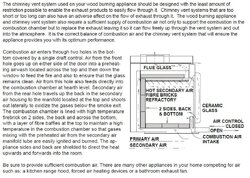T
Trooper
Guest
If stove temps need to be at about 1000F for secondaries to occur, why does the thermometer stop at 700?
At 700F and above it says "Too Hot". Last night I had my insert up to 700 but didn't want to push it just to see if I could get secondaries.
At 700F and above it says "Too Hot". Last night I had my insert up to 700 but didn't want to push it just to see if I could get secondaries.


 is a firebox temp in this case. The problem is that most folks have no way to measure the firebox temps, so for discussion sake maybe it's better to speak in terms of stove top temperature only.
is a firebox temp in this case. The problem is that most folks have no way to measure the firebox temps, so for discussion sake maybe it's better to speak in terms of stove top temperature only. . Should I just stick to learning my stove for now, and not worry too much about the secondaries? What is the benefit of having secondaries...is it proof of a hot, efficient fire?
. Should I just stick to learning my stove for now, and not worry too much about the secondaries? What is the benefit of having secondaries...is it proof of a hot, efficient fire?